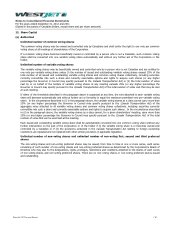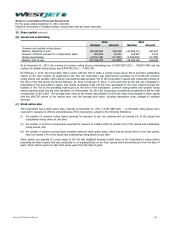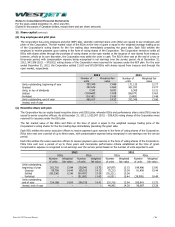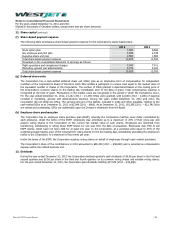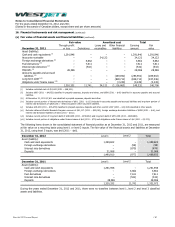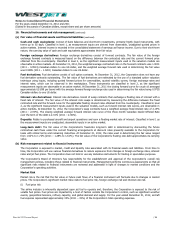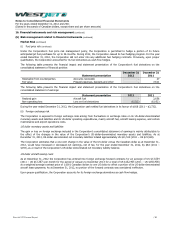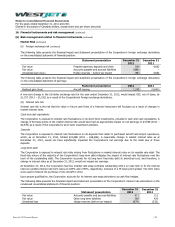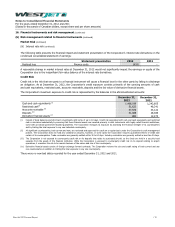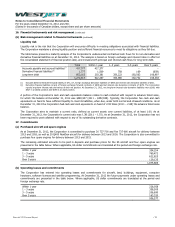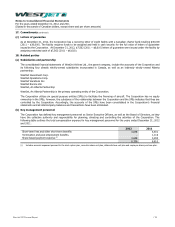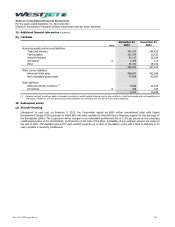Westjet 2012 Annual Report Download - page 91
Download and view the complete annual report
Please find page 91 of the 2012 Westjet annual report below. You can navigate through the pages in the report by either clicking on the pages listed below, or by using the keyword search tool below to find specific information within the annual report.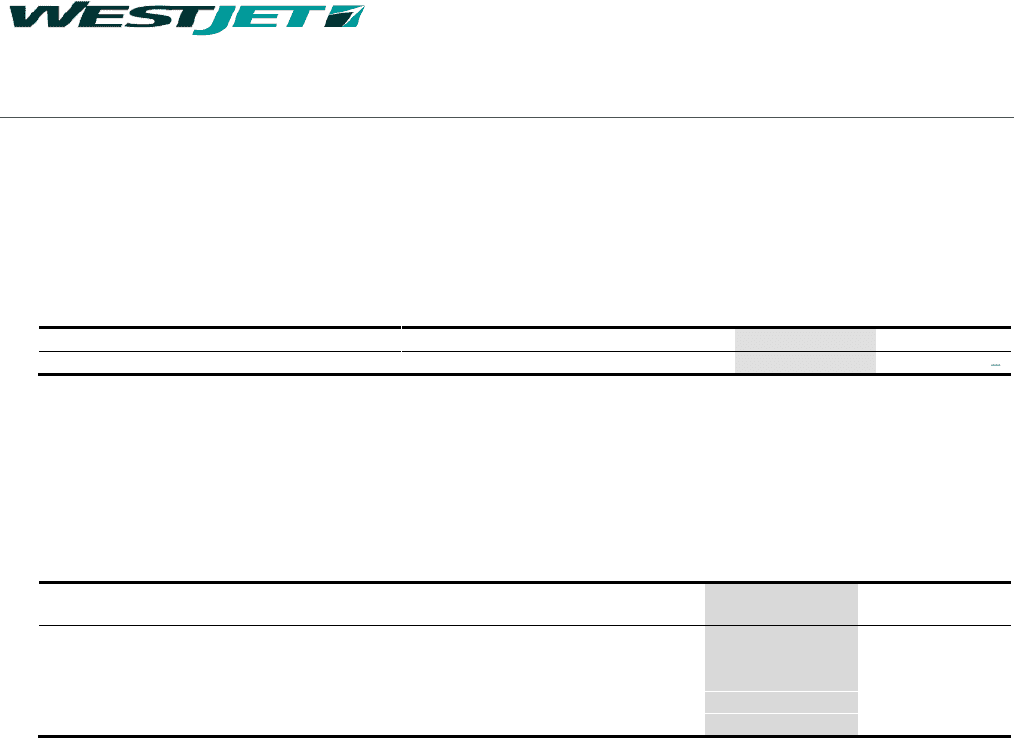
Notes to Consolidated Financial Statements
For the years ended December 31, 2012 and 2011
(Stated in thousands of Canadian dollars, except share and per share amounts)
16. Financial instruments and risk management (continued)
(b) Risk management related to financial instruments (continued)
Market Risk (continued)
(iii) Interest rate risk (continued)
The following table presents the financial impact and statement presentation of the Corporation’s interest rate derivatives on the
condensed consolidated statement of earnings:
Statement presentation
2012
2011
Realized loss
Finance costs
(418)
A reasonable change in market interest rates at December 31, 2012 would not significantly impact the earnings or equity of the
Corporation due to the insignificant fair value balance of the interest rate derivatives.
Credit Risk
Credit risk is the risk that one party to a financial instrument will cause a financial loss for the other party by failing t o discharge
an obligation. As at December 31, 2012, the Corporation’s credit exposure consists primarily of the carrying amounts of cash
and cash equivalents, restricted cash, accounts receivable, deposits and the fair value of derivative financial assets.
The Corporation’s maximum exposure to credit risk is represented by the balances in the aforementioned accounts:
December 31,
2012
December 31,
2011
Cash and cash equivalents (i)
1,408,199
1,243,605
Restricted cash(i)
51,623
48,341
Accounts receivable (ii)
37,576
34,122
Deposits (iii)
31,088
28,386
Derivative financial assets (iv)
800
12,273
(i) Consist of bank balances and short-term investments with terms of up to 92 days. Credit risk associated with cash and cash equivalents and restricted
cash is minimized substantially by ensuring that these financial assets are invested primarily in debt instruments with highly rated financial institutions,
some with provincial-government-backed guarantees. The Corporation manages its exposure by assessing the financial strength of its counterparties
and by limiting the total exposure to any one individual counterparty.
(ii) All significant counterparties, both current and new, are reviewed and approved for credit on a regular basis under the Corporation’s credit management
policies. The Corporation does not hold any collateral as security, however, in some cases the Corporation requires guaranteed letters of credit with
certain of its counterparties. Trade receivables are generally settled within 30 to 60 days. Industry receivables are generally settled in less than 30 days.
(iii) The Corporation is not exposed to counterparty credit risk on its deposits that relate to purchased aircraft, as the funds are held in a security trust
separate from the assets of the financial institution. While the Corporation is exposed to counterparty credit risk on its deposit relating to airport
operations, it considers this risk to be remote because of the nature and size of the counterparty.
(iv) Derivative financial assets consist of foreign exchange forward contracts. The Corporation reviews the size and credit rating of both current and any
new counterparties in addition to limiting the total exposure to any one counterparty.
There were no new bad debts recorded for the year ended December 31, 2012 and 2011.
WestJet 2012 Annual Report
/ 91


